 在效仿美国城市规划和交通设计的印度尼西亚,步行是件难事
在效仿美国城市规划和交通设计的印度尼西亚,步行是件难事
Why do Indonesians rarely walk?
译文简介
印尼在公共基础设施建设上采取了非常美国式的做法:它补贴并促进私家车的使用和拥有,这是在错误的西方国家接受教育的精英们缓慢但肯定的改革的结果。
正文翻译
Indonesia has a very American approach to public infrastructure: it subsidises and promotes private car usage and ownership, which is a result of slow but sure reform by the elites educated in the wrong western country (usually the car-dependent English speaking ones, instead of the more regular European ones).
As a result, here is our pedestrian facility:
印尼在公共基础设施建设上采取了非常美国式的做法:它补贴并促进私家车的使用和拥有,这是在错误的西方国家(通常是依赖汽车的说英语的国家,而不是更普通的欧洲国家)接受教育的精英们缓慢但肯定的改革的结果。
因此,这里是我们的行人设施:
As a result, here is our pedestrian facility:
印尼在公共基础设施建设上采取了非常美国式的做法:它补贴并促进私家车的使用和拥有,这是在错误的西方国家(通常是依赖汽车的说英语的国家,而不是更普通的欧洲国家)接受教育的精英们缓慢但肯定的改革的结果。
因此,这里是我们的行人设施:
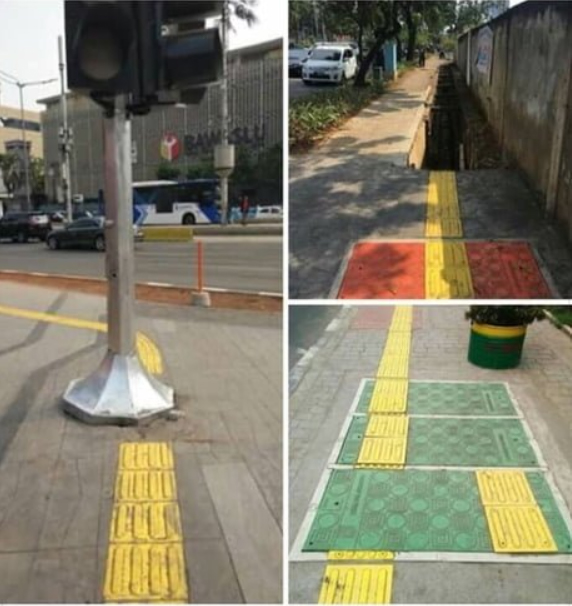
A guide for blind people that leads to danger.
指引盲人走向危险的向导(盲道)。
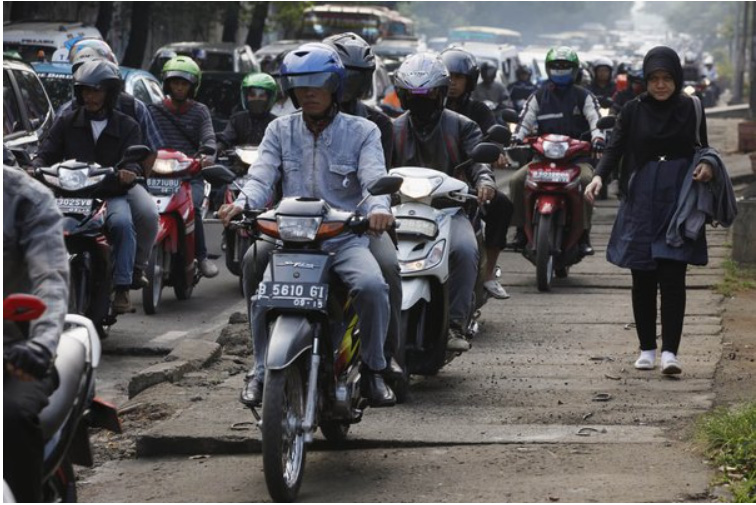
There is no rule, especially for motorcyclists in big cities, they can go everywhere they want.
没有规则,尤其是大城市的摩托车手,他们可以去任何他们想去的地方。
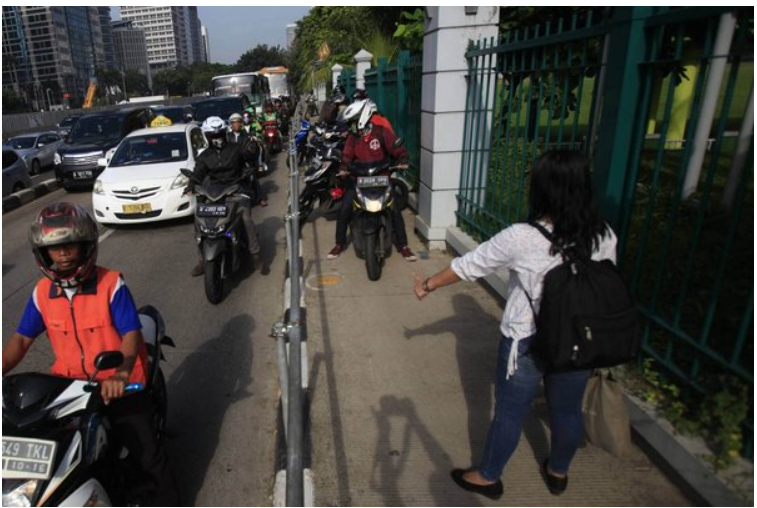
It literally doesn't want you to walk.
它真的不想让你步行。
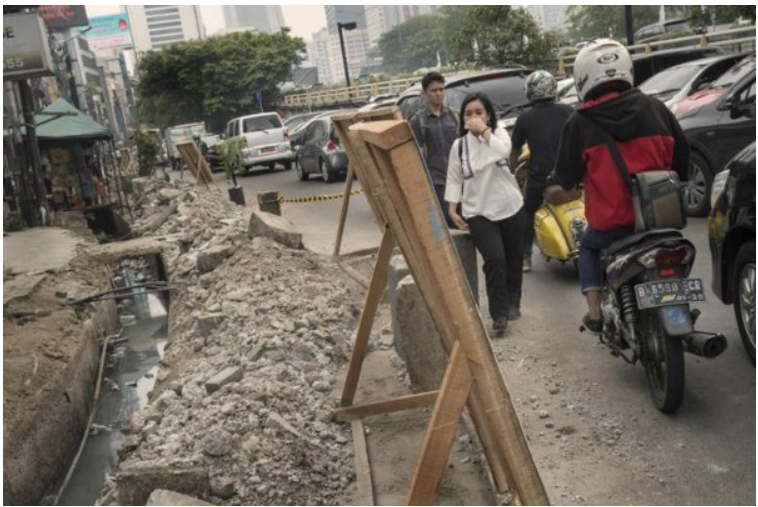
The officials and people who can afford it, always rely on their privileges, so a thing like this is never a problem for them.
至于能负担得起的官员和百姓,总是依靠他们的特权,所以这样的事情对他们来说从来都不是问题。
Of course, these are rich people and government officials who sent their kids to US, a car lobbyist infested country that of course is going to promote car-oriented development.
当然,这些都是把孩子送到美国的富人和政府官员,美国是一个充斥着汽车说客的国家,当然会促进以汽车为导向的发展。
原创翻译:龙腾网 http://www.ltaaa.cn 转载请注明出处
当然,这些都是把孩子送到美国的富人和政府官员,美国是一个充斥着汽车说客的国家,当然会促进以汽车为导向的发展。
原创翻译:龙腾网 http://www.ltaaa.cn 转载请注明出处
Turns out wide streets and spacious parking lots don't generate enough tax income per square foot, causing American towns to go bankrupt one by one.
事实证明,宽阔的街道和宽敞的停车场并不能为每平方英尺产生足够的税收收入,导致美国城镇一个接一个地破产。
事实证明,宽阔的街道和宽敞的停车场并不能为每平方英尺产生足够的税收收入,导致美国城镇一个接一个地破产。
This in turn, is copied by Indonesia, especially the major cities, which most of its foreign-graduate property designers and conceptors really took deep inspiration from the good old US of A.
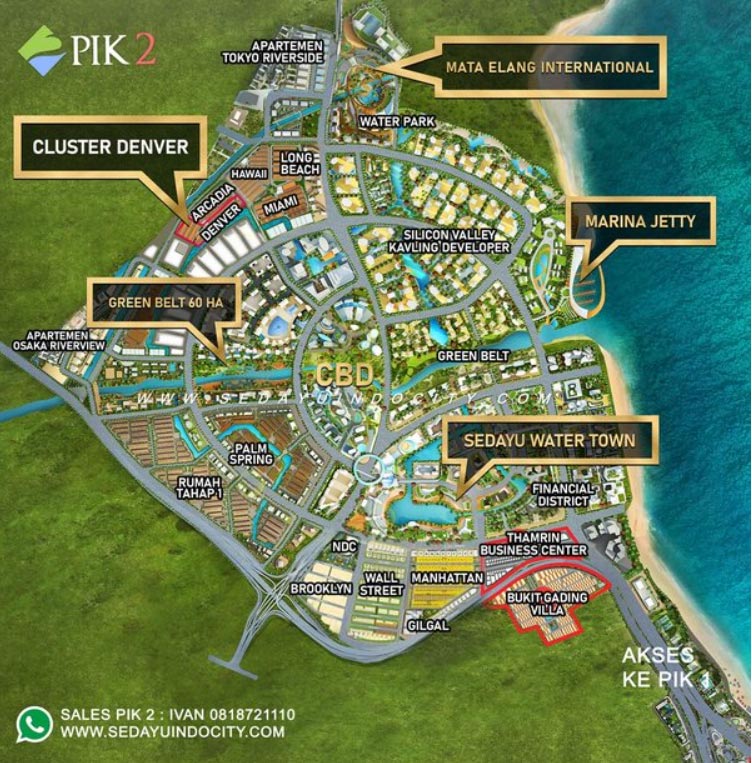
结果,这一点也被印度尼西亚效仿,尤其是在主要城市,大多数外国毕业生的房地产设计师和概念设计师确实从美好的古老的美国(非正式用语)获得了深刻的灵感。

结果,这一点也被印度尼西亚效仿,尤其是在主要城市,大多数外国毕业生的房地产设计师和概念设计师确实从美好的古老的美国(非正式用语)获得了深刻的灵感。
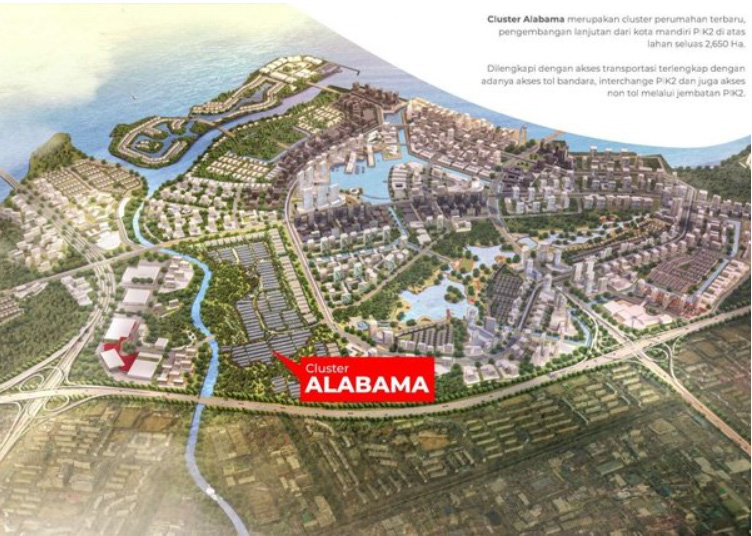
Oh yeah, and don't forget about the Sweet Sweet Home Alabama.
哦,对了,别忘了阿拉巴马甜蜜之家。
And of course, all of these will be made to be car-dependent. I mean, sure, you can walk around the neatly-themed developments, but it will be poorly integrated with public transit, that it requires private vehicles to reach the area.
当然,所有这些都将依赖于汽车。我的意思是,当然,你可以在这些主题巧妙的开发项目周围走走,但它将与公共交通系统很差地结合在一起,它需要私人车辆才能到达该地区。
当然,所有这些都将依赖于汽车。我的意思是,当然,你可以在这些主题巧妙的开发项目周围走走,但它将与公共交通系统很差地结合在一起,它需要私人车辆才能到达该地区。
Here is why Indonesians do walk when in, let's say Tokyo:
以下是为什么印尼人在东京会步行:
以下是为什么印尼人在东京会步行:
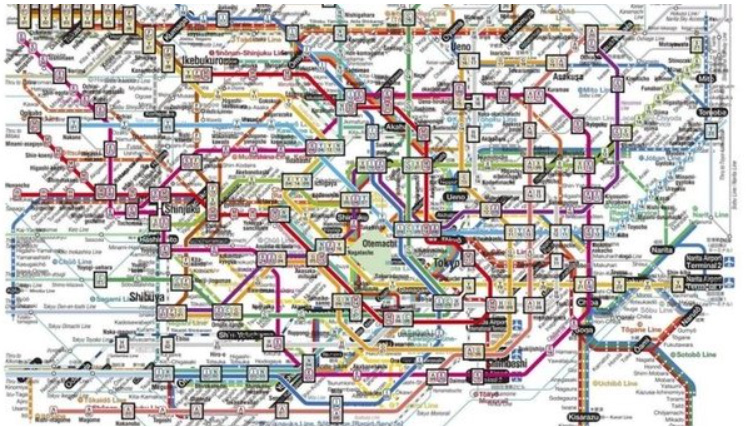
It is from the land that produces some of the best cars on planet earth, yet they encourage you to really walk in their major cities.
We also walk in Singapore, simply because their towns are heavily integrated with mass transit, and Singapore doesn't want you to drive. Its vulnerable energy supply chain would be in ruins if they were choked out of oil supply, which makes sense why they try to minimise fossil fuel dependence as much as possible.
它来自生产地球上最好的汽车的土地,但他们鼓励你在他们的主要城市真正步行。
我们也在新加坡步行,只是因为他们的城镇与公共交通高度融合,而新加坡不希望你开车。如果他们的石油供应被扼杀,其脆弱的能源供应链将会被摧毁,这就是为什么他们试图尽可能减少对化石燃料的依赖。
This creates a habit: and Indonesians will generally comply. Yeah, we will walk when the area is nice for pedestrians.
But back home, even my neighbourhood seemed to be confused with how to make the street safe for walking or safe for luxury car owners to avoid embarassment and scraping their fenders.
这就形成了一种习惯:印尼人通常会遵守。是的,我们会在这片区域适合行人的时候步行。
但在我的家乡,就连我的邻居似乎也感到困惑,不知道如何让街道变得安全,既能让人们安全地走路,也能让豪车车主避免尴尬和刮伤挡泥板。
But back home, even my neighbourhood seemed to be confused with how to make the street safe for walking or safe for luxury car owners to avoid embarassment and scraping their fenders.
这就形成了一种习惯:印尼人通常会遵守。是的,我们会在这片区域适合行人的时候步行。
但在我的家乡,就连我的邻居似乎也感到困惑,不知道如何让街道变得安全,既能让人们安全地走路,也能让豪车车主避免尴尬和刮伤挡泥板。
Where is the sidewalk? Is the entire street a sidewalk?Then how do you tell bad-behaving neighbourhood motorcyclist and car drivers to prioritise walkers and children playing on street?
Speed limit?Nobody does below 20 kph in this area.
The fact is: they don't really want you to walk here.
No, Indonesians will definitely walk if they have to, just take a look at this:
人行道在哪里?整条街都是人行道吗?那么,你如何告诉行为不佳的社区摩托车手和汽车司机优先考虑步行者和在街上玩耍的孩子?
速度限制吗?在这个地区没有人时速低于20公里。
事实是:他们真的不想让你在这里走路。
不,如果有必要,印尼人肯定会步行,看看这个:
原创翻译:龙腾网 http://www.ltaaa.cn 转载请注明出处
Speed limit?Nobody does below 20 kph in this area.
The fact is: they don't really want you to walk here.
No, Indonesians will definitely walk if they have to, just take a look at this:
人行道在哪里?整条街都是人行道吗?那么,你如何告诉行为不佳的社区摩托车手和汽车司机优先考虑步行者和在街上玩耍的孩子?
速度限制吗?在这个地区没有人时速低于20公里。
事实是:他们真的不想让你在这里走路。
不,如果有必要,印尼人肯定会步行,看看这个:
原创翻译:龙腾网 http://www.ltaaa.cn 转载请注明出处

Still more walkable than most places in Jakarta.
还是比雅加达的大多数地方更适合步行。
评论翻译
很赞 ( 3 )
收藏
I love that PIK2 masterplan … they have Tiong Bahru, Shibuya, Alabama, Shanghai and whatever the shit of foreign city names and neighborhoods put together and made a baby.
我喜欢PIK2(新雅加达城项目)的总体规划,他们把中峇鲁、涩谷、阿拉巴马、上海和任何外国城市的名字和社区放在一起,然后生了个孩子。
I love that PIK2 taking failed USA suburban into their housing development concept.
我喜欢PIK2将失败的美国郊区纳入他们的住房开发概念。
Not just PIK2. Lots of other property developers learned the same thing about US suburban culture.
My family had lived in Alam Sutera, in Serpong, Tangerang, since 2003/2004. We originally moved there to escape the flooding in Jakarta. That project was first started in the 90s. They openly admitted that they modeled it after American suburbia, according to their own periodicals. I remember back then, there was little infrastructure for walking and biking. A lot of those infrastructures for biking and walking were introduced years later (especially in the older areas of Alam Sutera), which is now incorporated as their marketing as this nice place for biking. At least there was shade on the road with big old trees on either sides of the road (only problem is when there’s a big rain storm, where it’s not rare to find tree branches falling on the road or on cars).
Lots of housing concepts similar to Alam Sutera in Serpong area, especially targeting well-to-do families who may have work/business interests in Jakarta but don’t want to live in crowded Jakarta. The bigger ones like Gading Serpong and BSD City are just as egregious in repeating this concept despite having better bus transit system than Alam Sutera.
不仅仅是PIK2。许多其他房地产开发商也从美国郊区文化中学到了同样的东西。
我的家人自2003/2004年以来一直住在Tangerang Serpong的Alam Sutera。我们最初搬到那里是为了躲避雅加达的洪水。这个项目最初开始于90年代。根据他们自己的期刊,他们公开承认他们模仿了美国的郊区。我记得那时候,步行和骑自行车的基础设施很少。许多自行车和步行的基础设施是在几年后引入的(特别是在Alam Sutera的老地区),现在他们把这里作为一个骑行的好地方作为营销对象。至少道路两旁有很大的老树遮荫(唯一的问题是,当有大暴风雨时,树枝掉落在道路上或汽车上并不罕见)。
许多类似于Serpong地区Alam Sutera的住房概念,特别是针对那些可能在雅加达有工作/商业利益,但不想住在拥挤的雅加达的富裕家庭。像Gading Serpong和BSD城这样的大城市,尽管拥有比Alam Sutera更好的公交系统,但同样令人震惊地重复了这个概念。
In all honesty, PIK is better than other townships in a sense that it offers a lot of outdoor attractions, with its proximity to the sea (also one of its selling points). My mom loves to jog there in afternoon especially near the cove part (on weekdays though, as weekend is hellish there - both the crowd and the traffic!)
Hope they maintain the facility throughout years so it keeps as shiny as it is currently.
说实话,PIK在某种程度上比其他城镇更好,因为它提供了很多户外景点,靠近大海(也是它的卖点之一)。我妈妈喜欢在下午去那里慢跑,尤其是在海湾附近(尽管是在工作日,因为周末在那里是地狱——无论是人群还是交通!)
希望他们能常年维护这个设施,让它保持现在的光泽。
Jakarta should be renamed as Los Jakarta or Houstonkarta.
The suburban-style property developers of Jakarta seems like obsessed with Los Angeles or whatever American-style city planning.
They didn’t give a fuck about the fact that the land size of Indonesia is far smaller than the US.
That Indonesia has precious tropical jungles.
That Indonesia has tropical heat that the solution are either planting trees on the streets or narrower streets with high rise buildings to give shade for pedestrians.
With low rise houses that has big lawns, and you have to go outside the complex just for shopping, surely it’s a hell for the pedestrians.
雅加达应该被重新命名为洛杉矶雅加达或休斯顿卡特。
雅加达郊区风格的房地产开发商似乎痴迷于洛杉矶或任何美国式的城市规划。
他们根本不在乎印尼的国土面积比美国小得多。
印尼有珍贵的热带丛林。
印度尼西亚是热带炎热地区,解决方案是在街道上植树,或者在有高层建筑的狭窄街道上为行人提供阴凉。
低层的房子有大草坪,你必须走到外面去购物,这对行人来说肯定是一个地狱。
This is so true. I made the mistake once while in Jakarta of looking at Google maps and thinking, “Hey, my hotel is only 500m away from my meeting. I’ll walk.”
Last time I did that.
这是真的。我曾经在雅加达犯过这样的错误:在看谷歌地图时,我想,“嘿,我的酒店离我的会议地点只有500米远。我会走路。”
上次我这么体验过。
I totally agree with you. Our cities, lots of them, development approaches are similar to American style. Indonesia is the motorcycle while the US is the car.
Low taxes are key to the effectiveness and efficiency of public transport. Our people prefer to buy private vehicles rather than pay high taxes for public transportation
我完全同意你的看法。我们的城市,很多城市,发展方式与美国风格相似。印尼是摩托车,而美国是汽车。
低税收是公共交通的有效性和效率的关键。我们的人民宁愿买私家车,也不愿为公共交通支付高额税款
Shame both the Philippines and Indonesia suffer from this problem. American urban planning does more harm than good.
菲律宾和印尼都有这个问题,真可耻。美国的城市规划弊大于利。
It’s about development stage. Indonesia is still in “walking is for the poors” stage.
这是关于发展阶段的。印尼仍处于“穷人才走路”的阶段。
PEOPLE Really need to take this post serious, good lord.
人们真的需要认真对待这篇文章,上帝啊。
Well, some Indonesians walk a lot inside the shopping mall.
嗯,一些印尼人经常在购物中心里走动。
But they drive to get there and fight for parking spaces in the lots and garages
但他们开车去那里,在地段和车库里争夺停车位
Some people hope Jakarta could have an integrated train system like Tokyo, but hell no, I’ve been living in Jakarta and Tokyo both, around a year each, but they’re different vibe.
Tokyo build on a train based system, people usually said the rent of house closer to train station is higher. Everything build around train station, Matsuri/Festival is being held within 5 minutes walk from the train station etc.
Here in Jakarta, nah, they need to build a lot more route. The local train is not everyone, the street is cramped, the road is full of cars and motorcycle. If there is more train route, integrated, can go anywhere at ease with train or bus way. Anyway high building everywhere, I wonder, would Jakarta be able to have underground integrated train route, or at least more train route to reach a lot more places and hub the satellite city. Maybe just maybe, with it we can change from vehicle culture society to walk culture society. Plus criminal rate should go down first.
有些人希望雅加达也能有东京那样的综合铁路系统,但不可能,我在雅加达和东京都住过,各住了一年左右,但它们的氛围不同。
东京建立在一个以火车为基础的系统上,人们通常说靠近火车站的房子租金更高。一切都建在火车站周围,从火车站步行5分钟就能举行祭典/节日等。
在雅加达,不,他们需要建更多的路线。当地的火车不是每个人都坐的,街道局促,道路上到处都是汽车和摩托车。如果有更多的火车路线,综合起来,可以用火车或公共汽车的方式去任何地方。无论如何,到处都是高楼大厦,我想知道雅加达是否能够拥有地下综合铁路线路,或者至少更多的铁路线路,以到达更多的地方,并将卫星城作为枢纽。也许只是也许,有了它,我们可以从汽车文化社会转变为步行文化社会。此外犯罪率应该会首先下降。
I really wish we stopped aping USA for everything in this country… Street are one of the worse case for me. I like to walk and most of the time I shared the walkway with motorcycle
我真的希望我们不要事事效仿美国,对我来说,街头是最糟糕的情况之一。我喜欢步行,大部分时间我和摩托车共享人行道
I don't think it is a particularly Indonesian problem. Most developing countries build infrastructure for cars and neglect pedestrian facilities, you just have to look at India Pakistan and Bangladesh.
我不认为这是印尼特有的问题。大多数发展中国家为汽车建设基础设施,忽视了行人设施,看看印度、巴基斯坦和孟加拉国就知道了。
Well if we really want to compare, fellow developing SEA countries such as Thailand and Malaysia do better than Indonesia in regards to pedestrian infrastructure, even if a lot of their cities are still very car centric. In terms of public transportation (which supports walking) Indonesia is also way behind other developing countries. Outside Jakarta, there is practically no reliable rail based public transportation (or any form of public transportation at all). Delhi is miles ahead of Jakarta in building their own metro system.
好吧,如果我们真的想比较的话,其他发展中东南亚国家,如泰国和马来西亚,在步行基础设施方面比印度尼西亚做得更好,即使他们的许多城市仍然以汽车为中心。在公共交通方面(支持步行),印度尼西亚也远远落后于其他发展中国家。在雅加达以外,几乎没有可靠的铁路公共交通(或任何形式的公共交通)。德里在建设地铁系统方面领先雅加达几英里。
I meant pedestrian facilities and these are bad across all of South Asia irrespective of whether there is public transportation or not including at Delhi.
我的意思是行人设施,无论是否有公共交通,包括德里在内,整个南亚的行人设施都很糟糕。
In India I feel if an area isnt walkable it’s by accident, in Jakarta I feel ppl purposely designed it that way. And lots of Delhi, Mumbai, Bangalore is pretty walkable nowadays in certain areas at least, basically no where in Jakarta is walkable
在印度,我觉得如果一个地区不适合步行,那是意外,在雅加达,我觉得人们是故意这样设计的。德里、孟买、班加罗尔的很多地方现在至少在某些地区是适合步行的,但雅加达基本上没有适合步行的地方
I live in Makassar, which is one of the biggest cities in Eastern Indonesia. I have noticed that the development of the pedestrian infrastructure is terrible. The government only seems to care about building more flyovers and highways but not providing safe and accessible routes for pedestrians. The lack of public transport is a major problem, as it feels like the government is pushing everyone to use motorcycles or cars. As a result, there are very few people walking on the sidewalks
我住在望加锡,它是印度尼西亚东部最大的城市之一。我注意到行人基础设施的发展很糟糕。政府似乎只关心建设更多的立交桥和高速公路,而不为行人提供安全、可达的路线。缺乏公共交通是一个主要问题,因为政府让每个人都使用摩托车或汽车。因此,很少有人走在人行道上
Infrastructure is one thing, as Indonesia is a developing country.
But, other than infra, Indonesia is a tropical country where the weather is mostly hot and humid or rainy. It is quite different from country with four seasons, in which one can walk tirelessly because the weather is cool, except in extreme cold of winter and hot in summer. Imagine arriving at work or study, either sweaty and sticky or soaking wet.
Also, in big city like Jakarta, the city is simply too big for one to walk to work, shop, etc. In developed cities, i.e., Singapore, Tokyo, Seoul, NY, London and others, people seems to walk a lot because people simply have to walk from one MRT station to other.
Last but not least, what is “Indonesia”? Indonesia is not only Jakarta, Surabaya and other big cities. As been stated by the writer, people do walk in smaller town.
基础设施是一方面,因为印尼是一个发展中国家。
但是,除了基础设施,印度尼西亚是一个热带国家,天气大多是炎热潮湿或多雨。它与四季分明的国家大不相同,四季分明的国家,除了冬天极冷,夏天极热之外,因为天气凉爽,人们可以不知疲倦地行走。想象一下,当你去工作或学习的时候,要么汗流浃背,黏糊糊的,要么浑身湿透。
此外,在像雅加达这样的大城市,城市太大了,人们无法步行去上班、购物等。在发达城市,如新加坡、东京、首尔、纽约、伦敦等,人们似乎走得很多,因为人们只是从一个捷运站(快捷运输系统站点,一般指地铁站)走到另一个。
最后但并非最不重要的,什么是“印度尼西亚”?印尼不仅有雅加达、泗水等大城市。正如作者所述,在小城镇里人们确实是步行的。
Singapore and KL are hot and humid but ppl walk and they have good public transport. Dubai is hell of hot but ppl still walk and use public transport
新加坡和吉隆坡又热又潮湿,但人们步行,他们有良好的公共交通。迪拜非常热,但人们仍然步行和使用公共交通
All kinds of weather need mitigation, whether it's scorching hot or freezing cold, arid or humid. In the case of tropical country like Indonesia this includes street trees, covered walkways, shophouses arcades (which are now illegal to build due to setback requirements), etc. They can function all year round, protecting pedestrians from both heat and rain.
If it's only about the weather, Malang and Bandung would have significantly more pedestrians compared to Surabaya and Jakarta, but that's not the case. Also, despite the climate change, there hasn't been much differences in the weather 50 years ago and today. And yet, there were more people cycling and walking to commute in big Indonesian cities back then — partially because they couldn't afford motor vehicles, but also because it was safer to do so (the fewer motor vehicles there are, the lesser the need for separate infrastructure to protect the pedestrians and micromobility users).
各种天气都需要减轻威力,无论是炎热还是寒冷,干旱还是潮湿。在印度尼西亚这样的热带国家,这包括行道树、有顶棚的走道、店屋拱廊(现在由于阻碍要求,这些建筑是非法的)等。它们一年四季都能发挥作用,保护行人不受高温和雨水的侵害。
如果只是因为天气,马郎和万隆的行人应该要比泗水和雅加达多得多,但事实并非如此。此外,尽管气候发生了变化,但50年前的天气和今天的天气并没有太大的不同。然而,当时在印度尼西亚的大城市里,骑自行车和步行上下班的人更多——部分原因是他们买不起机动车,但也因为这样做更安全(机动车越少,就越不需要单独的基础设施来保护行人和微型移动用户)。
The US doesn't have much of an option then being a car country because everything is so far away
They definitely could have made walk friendly cities, but you have to put all those cars somewhere for all the people who need it outside the cities
美国没有太多的选择,然后变成一个汽车国家,因为一切都太远了
他们当然可以建造步行友好型城市,但你必须把所有这些汽车都放在城市以外的地方,供所有需要它的人使用
I can assure you this is a problem for most developing countries.
And sadly you can see so bad neighborhoods in America has the same problem - I bike so that is a sure sign of being in dangerous territory.
American cities for the most part is not walkable, not designed for it, it’s difficult to push for it as well. If I am driving 99% of time it makes no sense to pay for good pavement for pedestrians.
我可以向你保证,这对大多数发展中国家来说都是一个问题。
可悲的是,你可以看到美国的坏社区也有同样的问题——我骑自行车,所以这是处于危险地区的一个明确标志。
美国的大部分城市都不适合步行,没有为它设计,也很难推动它。如果我99%的时间都在开车,那么花钱为行人修建良好的人行道就没有意义了。